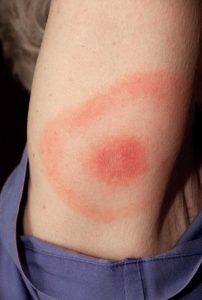By NewsDesk @infectiousdiseasenews
Pennsylvania state health officials have reported a decrease in Lyme disease cases in 2018 after seeing a steady rise since 2012.

A total of 10,208 cases were reported last year after seeing a record high in 2017 with 11,900 cases.
Lyme has risen annually since 2012 when 5,033 cases were reported.
Last year, the counties reporting the most cases include Chester (678), Butler (624), Westmoreland (490), Montgomery (463) and York (448).
Lyme disease is caused by the bacterium Borrelia burgdorferi and is transmitted to humans through the bite of infected blacklegged ticks.
The Department of Health says the early symptoms (3 to 30 days after tick bite) include: fever, fatigue, headache, muscle aches, joint pain, skin rash that looks like a bull’s eye (occurs in approximately 70 to 80 percent of infected persons) and other general symptoms may occur in the absence of rash.
When detected early, Lyme disease can be treated with antibiotics. People treated with appropriate antibiotics in the early stages of Lyme disease usually recover rapidly and completely. Left untreated, the disease can spread to the joints, heart and nervous system.
Lyme disease: The major players, the disagreements and the IDSA draft guidelines
Lyme and other tickborne diseases: ‘We need a national public-private strategy’
Lyme testing with Monica Embers, PhD
Lyme discovery: Borrelia bacteria hides inside parasitic worms, causing chronic brain diseases


